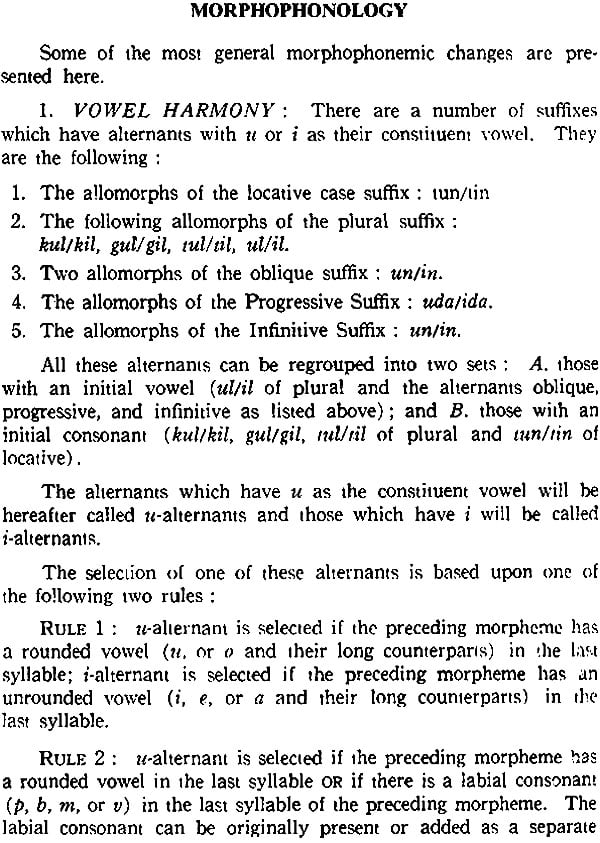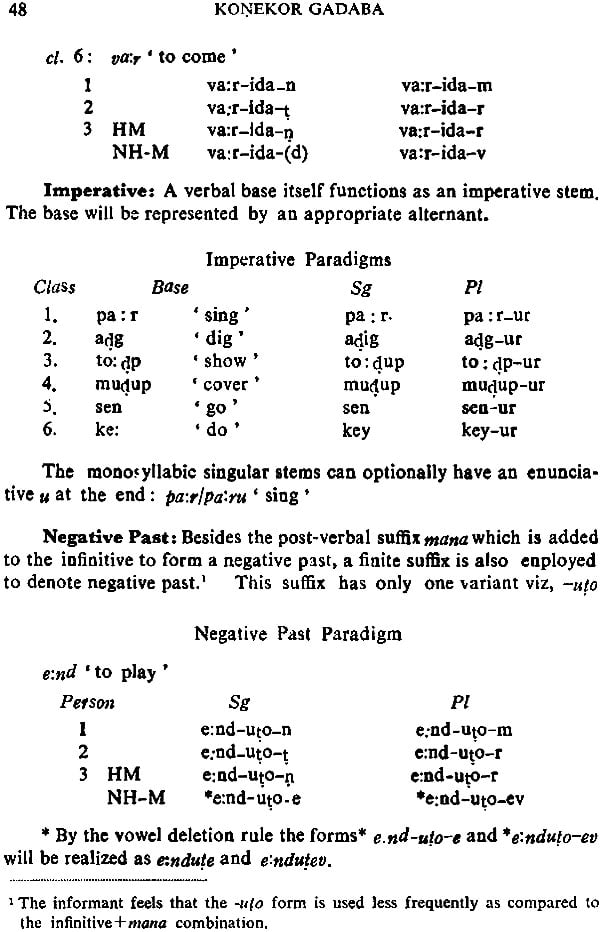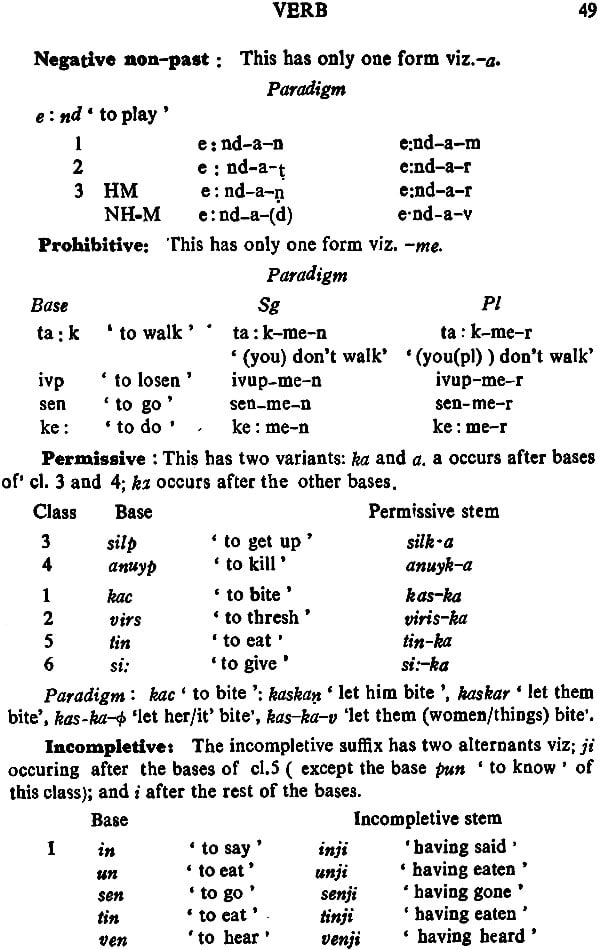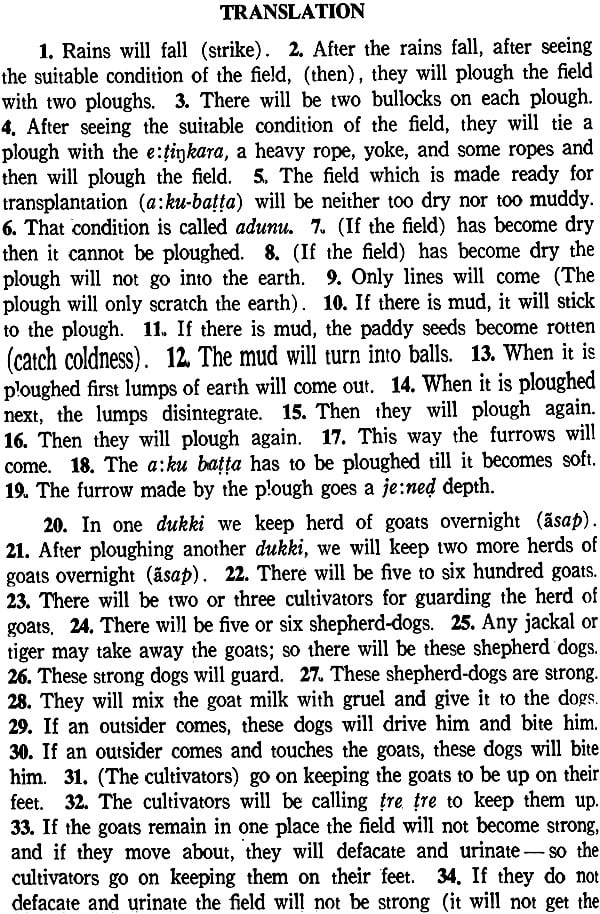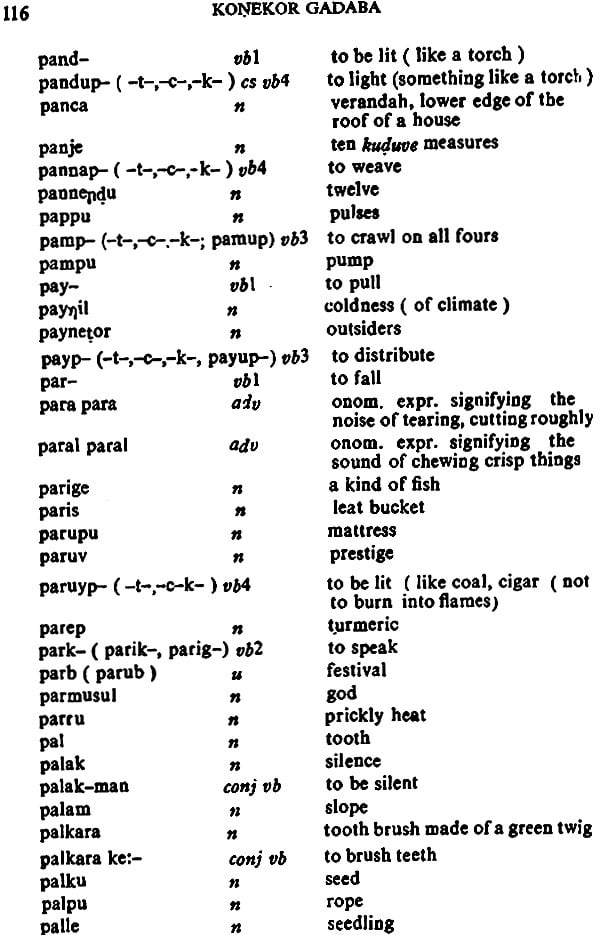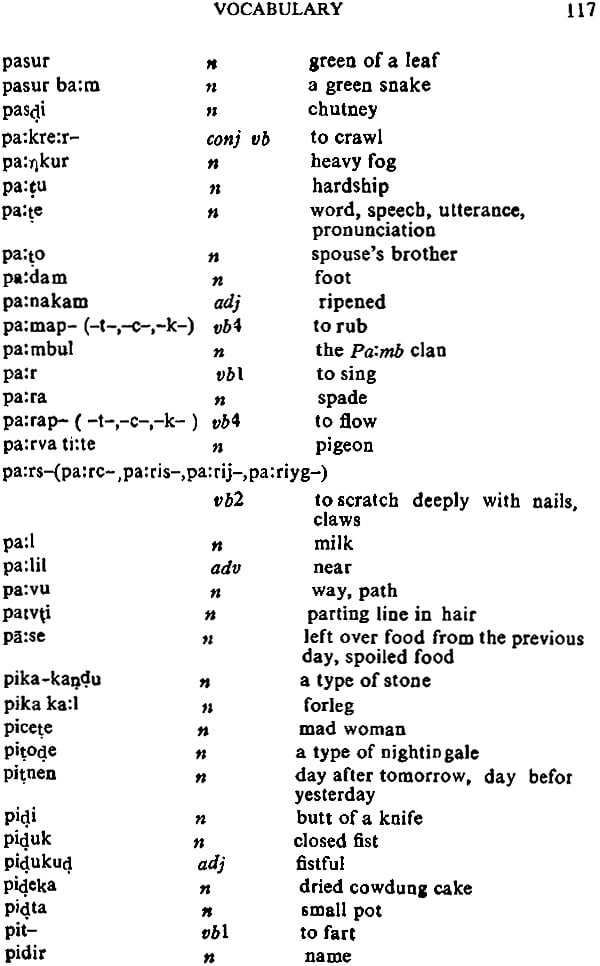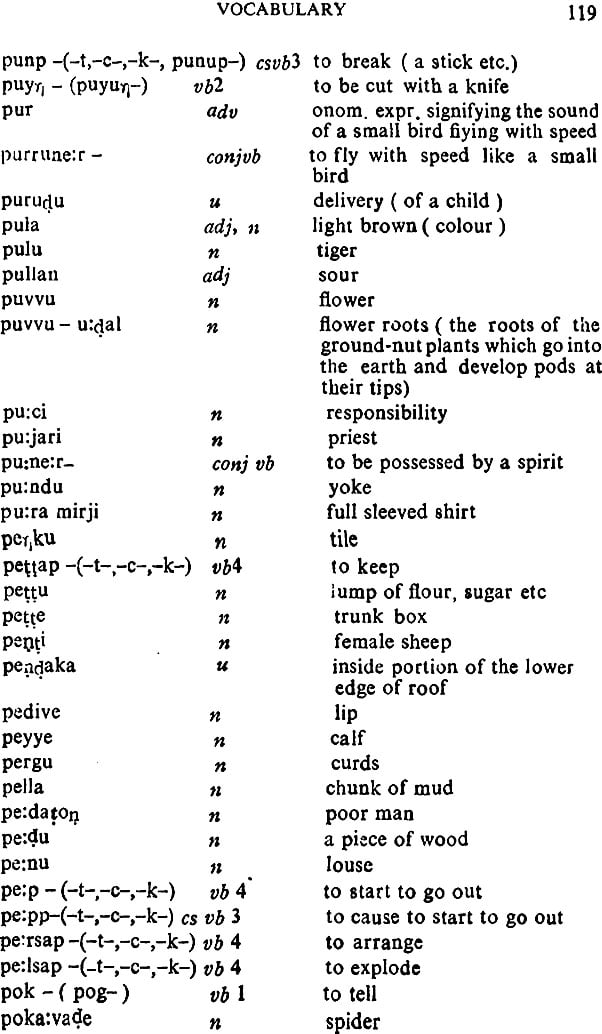
Konekor Gadaba: A Dravidian Language (An Old and Rare Book)
Book Specification
| Item Code: | NAM140 |
| Author: | Peri Bhaskara Rao |
| Publisher: | Deccan College Postgraduate and Research Institute |
| Language: | English |
| Edition: | 1980 |
| Pages: | 142 |
| Cover: | Paperback |
| Other Details | 8.5 inch x 5.5 inch |
| Weight | 230 gm |
Book Description
Konekor Gadaba belongs to the Parji-Kolami subgroup of Central Dravidian subfamily of language. Bhattacharya’s work on Ollari (1957) was the first published scientific account of this language. Ollari is spoken in the Karaput district of Orissa and was though by Bhattacharya (1957:8) as a dialect different from Konekor Gadaba (referred to by him as Poya in his book) which is spoken around Salur in the Srikakulam district of Andhra Pradesh (bordering Orissa). A later study by Burrow and Bhattacharya (1962-63:43) revealed that Konekor Gadaba and Ollari are the same, of course, with “the inevitable local differences which are always found in vernacular speech”.
Konekor Gadaba was also called Poya and Salur Gadaba by Burrow and Bhattacharya. Of these three names, Poya was found to be a wrong one by Burrow and Bhattacharya (Burrow and Emeneau 1961: xxiv). Among the other two names. Konekor Gadaba is preferable because the speakers of the language themselves like to be called Konekors. Konekor is alternatively pronounced as Kondekor [kone: ko: or- konde: ko: r]. An intervocalic n is alternatively pronounced as [n] or [nd] in this language. So the spelling konekor is preferred as compared to kondekor. Konekor Gadaba is different from Gutob Gadaba, a Munda language which is spoken also around Salur area elsewhere and which is often not distinguished from konekor Gadaba by the native Telugu and Oriya people around there.
The konekors also use the name Mundi [mundli] while referring to themselves. The informant told me that this is an older name of their tribe and the elderly people of their still prefer by this name.
This book is a thoroughly revised version of the author’s doctoral dissertation, ‘Kondekor Gadaba: A Dravidian language’, which was submitted to the University of Poona in 1972 and was awarded a Ph. D. degree in 1973. The analysis is based on materials collected during three field trips prior to 1972 and two more trips in 1975. Informants were selected from Panukuvalasa (pronounced as panukolsa) village near Salur in the Srikakulam district of Andhra Pradesh. It is a situated near Salur town on the Andhra-Orissa highway.
The konekors of Panukuvalasa, both men and women work mainly in the surrounding quarrys as stone- cutters and occasionally as agricultural labourers. They are bilinguals and speak Telugu with the neighbouring Telugus. Occasionally they come into contact with the Gutob Gadabas also. The main informant for this work was Onsol Parayya. He knows Telugu besides his mother tongue and had no school education.
I am highly thankful to Prof. S.B. Deo, Director of Deccan College for his constant help, encouragement and inspiration. The original dissertation was written under the guidance of Prof. Ashok R. Kelkar. I am extremely grateful to him. Prof. F.B.J. Kuiper and Prof. P. S. Subrahmanyam were the referees for the original thesis. My thanks are due to them for suggesting several revisions including the phonemic nature of the vowel length in the word final cvc syllables and the nature of vowel harmony etc. The responsibility is entirely mine for any drawbacks that still remain in the work. It was Prof. Bh. Krishnamurti who had first suggested the topic of Konekor Gadaba to me I am thankful to him.
| Phonology | 1 |
| Phonemic inventory | 1 |
| Contrasts | 1 |
| Phonetic correlates | 2 |
| Disrribution of phonemes | 3 |
| Morphophonology | 7 |
| Vowel harmony | 7 |
| Anaptyxis and vowel harmony | 8 |
| Consonant assimilation | 10 |
| Replacement of final dentals & palatals; Nasalization and denasalization; Vowel deletion; Metathesis | 12 |
| y-insertion; n-nd alternation; Non-morphemic u; c-s altrnation | 13 |
| Noun | 13 |
| Formation | 14 |
| Deivation | 14 |
| Nominal compounds | 16 |
| Inflection | 16 |
| Gender-number and Person | 16 |
| Case | 20 |
| Personal pronouns | 21 |
| Verb | 23 |
| Structure | 23 |
| Complex verbal bases | 23 |
| Derived bases | 23 |
| Causative bases | 23 |
| Syntactic and Semantic Notes | 29 |
| Conjugational Classes | 30 |
| Base Alternants | 36 |
| Tense-Mode Suffixes | 42 |
| Past | 42 |
| Non-Past | 44 |
| Progressive | 46 |
| Imperative | 48 |
| Negative Past | 48 |
| Negative Non-Past | 49 |
| Prohibitive | 49 |
| Permissive | 49 |
| Incompletive | 49 |
| Conditional | 50 |
| Relative participles | 50 |
| Infinitive | 51 |
| Person Suffixes | 51 |
| Post-Verbal Paradigm | 54 |
| Modifiers and Particles | 59 |
| Demonstrative and Interrogative Bases | 64 |
| Reduplication and onomatopoeia | 67 |
| Texts | 69 |
| Vocabulary | 88 |
| References | 135 |
